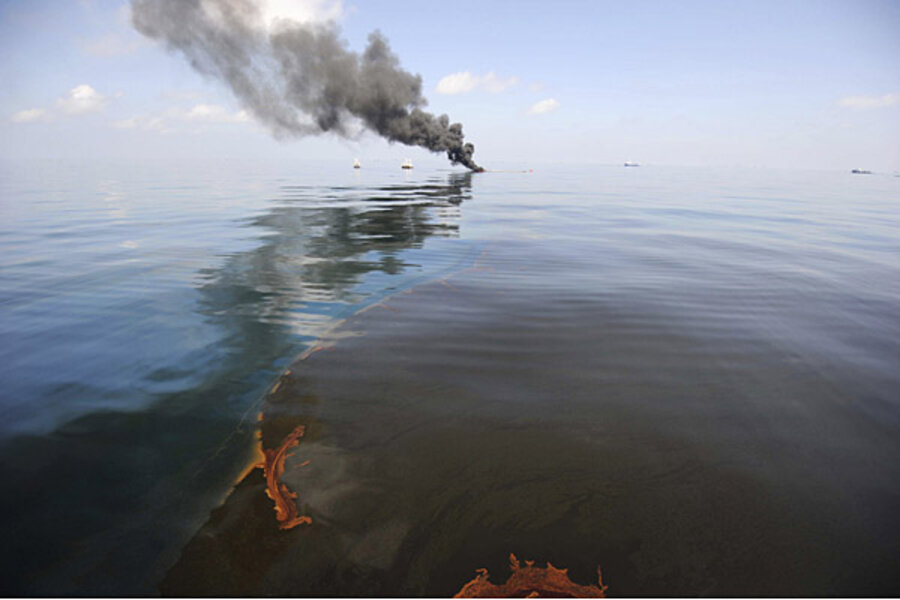Energy literacy: visualizing the impacts of unlimited growth
Loading...
It is hard to imagine a more unlikely vehicle for advancing energy literacy than a finely crafted large format picture book. Energy, after all, is invisible. We see its effects, but never the thing itself. And yet, Energy: Overdevelopment and the Delusion of Endless Growth succeeds and succeeds profoundly for it puts on display those effects so compellingly that the reader cannot help but turn the pages to see more.
Taken with the eye of the fine art photographer, the book’s images project a disturbing beauty. They seduce the viewer with their attention to composition, color, light, and perspective. This impels us to enter into these images and contemplate rather than merely visually consume an exploding offshore oil platform; a desolated landscape strewn with derelict drilling rigs; a decapitated mountain; a pelican coated with oil; a coal strip mine seen from its bottom; and a tar sands mine seen from the sky. Once drawn in, the viewer cannot help but feel the immensity and drama of the energy issues we now face. And, once drawn in, the viewer wants more images that will somehow explain this immense drama and its significance for each of us.
Leafing through the pages, you will be astonished at each successive image. Eventually, you will reach a substantial block of text. By then you will be more than ready for some explanation to put into words what all these images taken together might mean.
The essays that follow are penned by noted writers such as poet, novelist and farmer Wendell Berry, climate change activist Bill McKibben, and peak oil author Richard Heinberg; by scientists such as climate scientistJames Hansen and sustainable agriculture researcher Wes Jackson; and by big-picture pragmatists such asPlan B author Lester Brown and energy efficiency guru Amory Lovins.
These and others take readers through the entire controversy surrounding energy starting with key energy concepts and then moving onto the waning of the fossil fuel age, alternative energy, climate change, energy conservation, and energy efficiency. Opposite these essays, many full-page images continually remind us of the colossal nature of the subject.
I feel comfortable revealing the overall conclusion of the book without issuing a spoiler alert for in order to understand this conclusion, you must understand everything that precedes it. Here it is: We must drastically reduce our use of energy over the coming decades if we expect human civilization and perhaps even humans to survive.
This conclusion runs so contrary to the conventional wisdom that those new to energy issues may conclude that it cannot be so. But I urge you to keep reading and contemplating the images. The book’s second section correctly characterizes our energy situation as a predicament. The dictionary defines predicament as a “a difficult, perplexing, or trying situation.” Frequently, it means a situation for which there is no response that restores the status quo ante. Problems have solutions; predicaments require coping mechanisms.
To disabuse readers of the solutions currently on offer—such as new unconventional sources of oil and natural gas, “clean” coal, nuclear power, massive hydropower dams, biofuels, and geoengineering of the climate—an entire section of essays explains why these are false solutions if by solutions people mean that we can go on with business-as-usual after implementing them.
As image upon image builds in your mind, you will begin to see that there are deeper concerns at stake, and the essayists help elucidate these: the rights and survival of other species; the voracious human appetite unleashed by modern global capitalism and its creed of perpetual growth; the nature of human happiness; and the importance of beauty. (The book, in fact, treats us to some images of unspoiled landscapes to remind us of the beauty we are losing.)
Economic growth has limits on a spherical planet. Those limits are already in evidence. What Energy does in a profound way is demonstrate that human beings are limited creatures, both in their understanding and their powers. We humans have already amply demonstrated that by not anticipating and then not addressing the myriad critical environmental and resource problems we face today.
What this book seems to ask then is whether accepting limits, ours and the Earth’s, can make us and our posterity better humans—or whether it is simply inevitable that our hubris borne of nothing other than a brief period of cheap, plentiful but finite energy will lead us to ruin.
History and science tells us that this era must end. How it will end is partly in our hands. Energy does make a few suggestions: conservation, distributed renewable energy, reinvigorated local economies, family planning, and a renewed emphasis on the intangible rewards of being human including the fellowship of others and our encounters with beauty.
Will we continue to accept the religion of unlimited economic growth—which must also be accompanied by unlimited growth in the production of energy and other resources—until a remorseless nature enforces its limits upon us?
Or will we accept those limits—now so painstakingly outlined to us by our own science—and seek out the happiness and beauty that comes from working in concert with others to transform our society into one that can sustain us—and sustain all the living things which make our lives possible and which have a claim on the biosphere that we can no longer afford to ignore?





